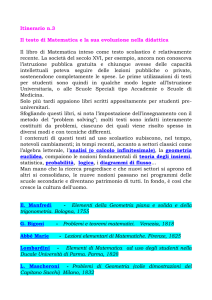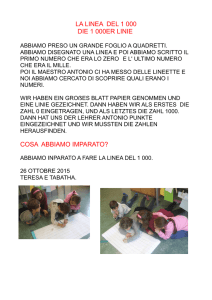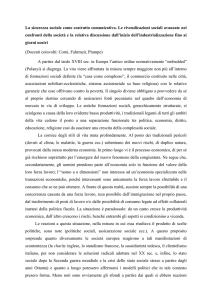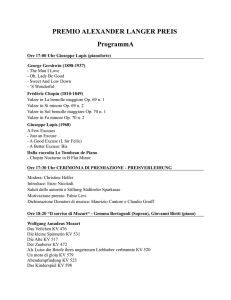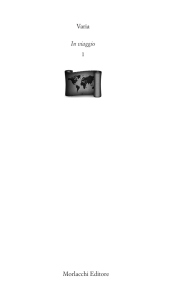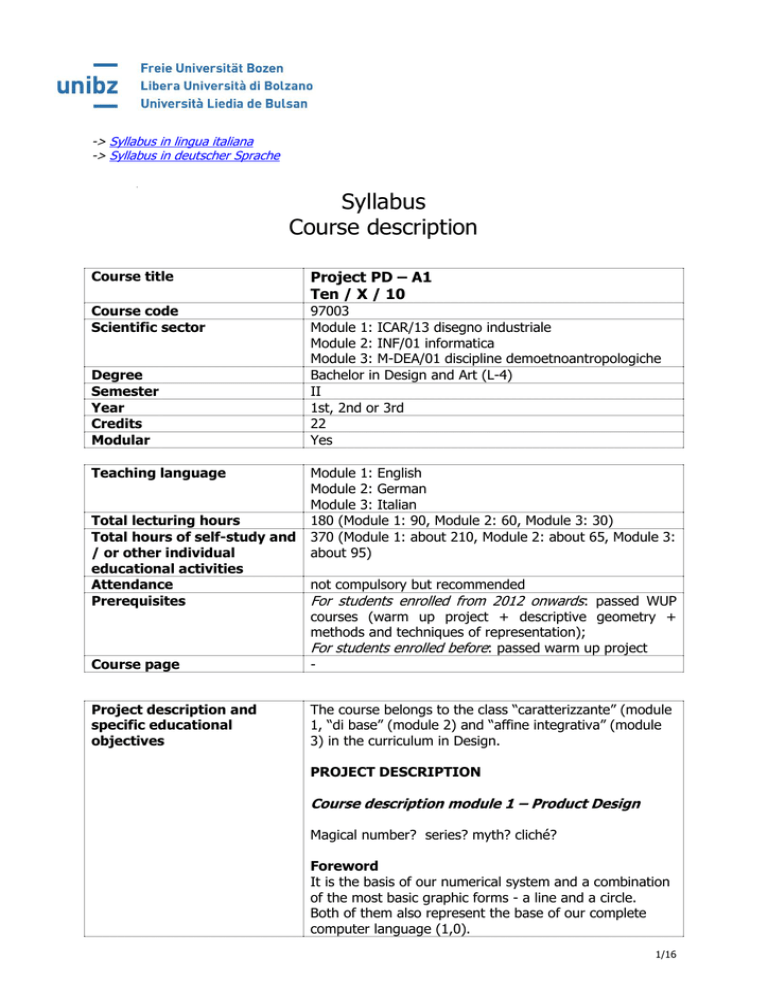
-> Syllabus in lingua italiana
-> Syllabus in deutscher Sprache
Syllabus
Course description
Course title
Project PD – A1
Ten / X / 10
Course code
Scientific sector
97003
Module 1: ICAR/13 disegno industriale
Module 2: INF/01 informatica
Module 3: M-DEA/01 discipline demoetnoantropologiche
Bachelor in Design and Art (L-4)
II
1st, 2nd or 3rd
22
Yes
Degree
Semester
Year
Credits
Modular
Teaching language
Total lecturing hours
Total hours of self-study and
/ or other individual
educational activities
Attendance
Prerequisites
Module 1: English
Module 2: German
Module 3: Italian
180 (Module 1: 90, Module 2: 60, Module 3: 30)
370 (Module 1: about 210, Module 2: about 65, Module 3:
about 95)
not compulsory but recommended
For students enrolled from 2012 onwards: passed WUP
Course page
courses (warm up project + descriptive geometry +
methods and techniques of representation);
For students enrolled before: passed warm up project
-
Project description and
specific educational
objectives
The course belongs to the class “caratterizzante” (module
1, “di base” (module 2) and “affine integrativa” (module
3) in the curriculum in Design.
PROJECT DESCRIPTION
Course description module 1 – Product Design
Magical number? series? myth? cliché?
Foreword
It is the basis of our numerical system and a combination
of the most basic graphic forms - a line and a circle.
Both of them also represent the base of our complete
computer language (1,0).
1/16
It is the ultimate player number in team sports (see
Messi, Maradona, Zidan or Pele). In the Roman numerical
system it is X it is also an onomatopoeia and used as a
short for 'kiss'.
In Chinese culture it is equivalent to the Western '+'
which is also the universal sign of 'positive'.
In biblical times there were the ten commandments given
by god and in modern times the ten thousand day war in
Vietnam. It's a playing card and the function key in Mac
OS which unites all windows together.
Each official countdown starts with it and it's the ultimate
listing - where the 'top-ten' in everything represent the
ultimate.
In many cultures Ten it is a sign of the optimal.
As an olympic mark it symbolises perfection and when in
1976 Nadia Comăneci got the first olympic '10' ever, the
display did not show it but '1.0' as the perfect '10' didn't
exist before, and so the technology was evidently not
ready for perfection (...)
It's a number, it's a code, it's a list and it's a myth.
Project
We will be looking at daily life, mundane objects and
special moments, trying to identify a 10 and 10's.
We will focus on 'Ten/10/X' at it's largest scope or the
narrowest interpretation. We will be dealing with unique
items, series, multiplications and variations and perfection
as well as myths, memories and magic.
The goal of this project is to create analogies holding an
exciting discourse with the theme and translating it into
products -on the widest sense. As such the result may be
a one-off three dimensional object or a mass consumption
product as much as it could be a spatial intervention, a
scenography or just a 10 second moment...
Ten possible starting points
Ten Seconds... ten Pixels... ten m².... ten megabytes...
ten years...ten objects... ten Watt...ten ideas... ten
words... a perfect ten...
Educational objectives module 1 – Product Design
2/16
The acquisition of the basic knowledge concerning
the culture of design in all its aspects.
The acquisition of a design methodology in the field
of product design from the initial idea phase to the
final completion phase of the project.
Developing an independent point of view and
rigorous study pathway whilst acquiring the
fundamental knowledge enabling the student to
carry out a project in the field of product design.
Depending on the student's own tendencies and
focus, the further acquisition of the knowledge and
understanding of:
- design processes for industrial products for mass
consumption or industrial manufactured one-off's.
- design processes for the visualisation of virtual
and physical scenarios.
Professionally presenting a project realised in the
field of product design in the form of an installation,
both oral and written.
communicate at a professional level and argue the
reasons for their choices and justify them from a
formal, technical, scientific and theoretical point of
view
Course description module 2 – Digital Modelling:
> see German version of the syllabus
Educational objectives module 2 – Digital
Modelling:
the acquisition of the essential basic knowledge to
be able to carry out a project in the field of
product design
the acquisition of the basic knowledge concerning
the technical and scientific subjects
the
acquisition
of
the
knowledge
and
understanding of design processes for the
visualisation of virtual and physical scenarios
know how to produce visualisations of virtual and
physical scenarios for product design
know how to carry out drawing and/or CAD
(computer-aided design)
know how to produce 3D models and rapid
prototyping
communicate at a professional level and argue the
reasons for their choices and justify them from a
formal, technical, scientific and theoretical point of
view
3/16
Course description module 3 – Cultural
Anthropology:
-> see Italian version of the syllabus
Educational objectives module 3 – Cultural
Anthropology:
-> see Italian version of the syllabus
Module 1
Lecturer
Scientific sector of the
lecturer
Teaching language
Office hours
Teaching assistant
List of topics covered
Product Design
Nitzan Cohen
office F1.01.a, e-mail [email protected], tel. +39
0471 015220, webpage http://www.unibz.it/en/designart/people/StaffDetails.html?personid=35262&hstf=35262
ICAR/13
English
Tuesday 16.00-18.00
This project deals on the meta level with the creation of a
project, as such the below topics do not only lead to an
aim, but are the aim itself.
-Design methodology and process awareness.
-Design investigation instead of design research and that
as a continuous methodical tool.
-Conceptual thinking and independent concept creation.
-Concept translation into three dimensional reality.
Teaching format
Frontal lectures, group discussions, exercises and
workshops, labs, short-medium-long term projects.
Module 2
Lecturer
Digital Modelling
Sebastian Camerer
office F1.01.b, e-mail [email protected], tel.
+39 0471 015236, webpage
http://www.unibz.it/en/designart/people/StaffDetails.html?personid=28444&hstf=28444
INF/01
Scientific sector of the
lecturer
Teaching language
Office hours
Teaching assistant (if any)
List of topics covered
Teaching format
German
Tuesday 16.00-18.00
-
modelmaking
rapid prototyping
digital/analog tools
productdevelopment
designprocess and Methodology
Lectures, practical exercises, workshop
4/16
Module 3
Lecturer
Scientific sector of the
lecturer
Teaching language
Office hours
Teaching assistant (if any)
List of topics covered
Cultural Anthropology
Carmelo Marabello
office F1.01.b, e-mail [email protected], tel.
+39 0471 015236, webpage
https://www.unibz.it/en/designart/people/StaffDetails.html?personid=28088&hstf=28088
L-Art-06 , M-DEA 01, phd
Italian
Thursday, 8:30 – 9:30
-> see Italian version of the syllabus
Teaching format
-> see Italian version of the syllabus
Learning outcomes
Learning outcomes for module 1 – Product Design
The acquisition of basic and further enriched
knowledge of and in product design.
The acquisition of the ability to independently and
critically apply the acquired knowledge and
understanding whilst making continuous
independent and personal judgments.
In every step of the way further developing and
sharpening one's skills, know-how and experience
in communicating the full scope of the work done.
All in all developing and widening one's learning
skills as an integral and methodical part of the
project.
Learning outcomes for module 2 – Digital
Modelling:
the acquisition of the essential basic knowledge to
be able to carry out a project in the field of
product design, with a special focus on
designprocesses, digital and analog techniques of
modelling, prototyping and visualisation of
concepts.
know how to analyse, design and develop models
and prototypes for a product-design-project.
knowledge of the technical and scientific aspects
of digital modelling, prototyping and fabrication in
product design
know how to develop and carry out the technical
aspects of product-design, prototyping and
modelling which are both analog and digital
5/16
skills to communicate at a professional level and
argue the reasons for their choices and justify
them from a formal, technical, scientific and
theoretical point of view
Learning outcomes for module 3 – Cultural
Anthropology:
-> see Italian version of the syllabus
Assessment
Assessment details for module 1 – Product Design:
The complete semester work will be judged not only on
the final produced result. The way will be assesed as
much as the 'result' itself.
On the base of physically presenting a fully finished 1:1
scale model together with an overall completed project;
the student should be able to argue the project and
throughly hold a convincing frontal presentation of it.
In further discussions it is as well expected that the
student is able to apply criticle and objective view on
his/her own work and point out difficulties as much as
plus points. (Besides all the physical aspects being
perfectly executed, a healthy way of preparing oneself for
the final presentation is making sure that the simple
question 'why?' could be answered concerning each detail
and step)
Assessment details for module 2 – Digital
Modelling:
Oral and lab: oral exam with review questions, oral exam
to test knowledge application skills, evaluation of results
Assessment details for module 3 – Cultural
Anthropology:
-> see Italian version of the syllabus
Assessment language
Evaluation criteria and
criteria for awarding marks
The same as the teaching language.
The evaluation of the single modules does not result in
three separate marks, but will add up to the overall
project evaluation. There is only one final overall mark for
the project which is agreed by the three professors, who
evaluate the project according to the following criteria:
Evaluation criteria and criteria for awarding marks
6/16
for module 1 – Product Design
Process:
there would be two in-between presentations, each
counting for 20% of the final mark, in total 40%
Personal development:
the scope of abilities acquired and practiced in the
projects as reflected in the overall level of the work done
and presented 40%
Final result:
the overall quality of the final presentation and the final
presented model 20%
Evaluation criteria and criteria for awarding marks
for module 2 – Digital Modelling:
It is required to prove results of the exercises and
workshops that will be conducted during the course.
Completeness and quality of all works, models, research
and presentations, the originality of ideas, personal
interest, motivation and contribution to the class will be
considered.
Evaluation criteria and criteria for awarding marks
for module 3 – Cultural Anthropology:
-> see Italian version of the syllabus
Required readings
Module 1 – Product Design:
Integrated in the course itself.
Module 2 – Digital Modelling:
no required readings
Module 3 – Cultural Anthropology:
Prima lezione di Antropologia di F. Remotti,
Laterza
Il pensiero selvaggio C.Lèvi-Strauss Einaudi
Geertz Interpretazione di Culture Mulino
Supplementary readings
Module 1 – Product Design:
-
Module 2 – Digital Modelling:
-
7/16
Module 3 – Cultural Anthropology:
to be defined during the course
8/16
Syllabus
Beschreibung der Lehrveranstaltung
Titel der Lehrveranstaltung
Projekt PD – A1
Code der Lehrveranstaltung
Wissenschaftlichdisziplinärer Bereich der
Lehrveranstaltung
Studiengang
Semester
Studienjahr
Kreditpunkte
Modular
10 / X / TEN
97003
Modul 1: ICAR/13 Industriedesign
Modul 2: INF/01 Informatik
Modul 3: M-DEA/01 Demoetnoantropologische Disziplinen
Bachelor in Design und Künste (L-4)
2.
1., 2. oder 3.
22
Ja
Gesamtanzahl der
Vorlesungsstunden
Gesamtanzahl der Stunden
für das Eigenstudium und
andere individuelle
Bildungstätigkeiten
Anwesenheit
Voraussetzungen
180 (Modul 1: 90, Modul 2: 60, Modul 3: 30)
370 (Modul 1: ca. 210, Modul 2: ca. 65, Modul 3: ca. 95)
nicht verpflichtend, aber empfohlen
Für im Jahr 2012 immatrikulierte Studierende: die WUPKurse
(Projekt
+
Darstellende
Darstellungsmethoden und –techniken);
Geometrie
+
Für Studierende, die sich vor 2012 immatrikuliert haben:
Link zur Lehrveranstaltung
nur das WUP-Projekt
-
Kursbeschreibung und
spezifische Bildungsziele:
Modul 2 - Digitaler
Modellbau
Die Lehrveranstaltung zählt zum Bildungsbereich der
kennzeichnenden Fächer (Modul 1), der Grundfächer
(Modul 2) sowie der verwandten und ergänzenden Fächer
(Modul 3) und ist Teil des Studienzweigs Design.
Kursbeschreibung Modul 2 – Digitaler Modellbau:
… 11000101001011001 ...
Der Computer erlaubt dem Designer präzises Entwerfen,
Analysieren und Herstellen von Prototypen.
Aber können hier auch Ideen entstehen, Lösungen
gefunden werden ? Fragen der Konstruktion oder
Formfindung werden mit Pappe, Schnur und Klebeband
meist besser geklärt als mit konkreten Abbildungen und
physikalischen Berechnungen. Andersherum können CADProgramme dabei helfen mehr mit den Händen zu
arbeiten. Manchmal hilft aber auch das beste Modell nicht
weiter und plötzlich findet man die Lösung auf der
Strasse. Was ist das überhaupt, ein Modell ? Und was ist
9/16
ein gutes Modell ? Welchen Einfluss hat die Art des
Modellbaus auf den Ablauf eines Projekts und die Form
eines Produkts?
Das Modul behandelt das experimentelle Entwerfen und
Entwickeln im Zusammenspiel analoger und digitaler
Technologien. Verschiedene Arten zur Erstellung von
Modellen und deren Bedeutung in verschiedenen Phasen
des Entwurfs werden betrachtet und probiert.
Wir setzen uns mit grundlegenden Prinzipien des
Modellbaus, dem Umgang mit Entwurfswerkzeugen,
Verfahren und Materialien auseinander. Dazu zählt die
Verwendung von CAD-Programmen und wie sie in
Kombination mit handwerklichen Methoden den Entwurf
vorantreiben können. Durch kontinuierliches
Experimentieren sollen Strategien entdeckt und entwickelt
werden. Dabei spielen wir mit ...
Zufall, Zweckentfremdung, Rekombination, Skalierung,
Vervielfältigung, Vereinfachung, Serie,
Variation, Muster, Improvisation, Evolution, Abstraktion,
Sprache, Quantität, Qualität, Im/Perfektion, Simulation,
Täuschung ...
Bildungsziele Modul 2 – Digitaler Modellbau:
Erwerb der Grundkenntnisse in den technischen und
wissenschaftlichen Fächern
In der Lage zu sein, das erworbene technische und
wissenschaftliche
Grundwissen in die Ausführung
eines zu realisierenden Projekts im Bereich
Produktdesign einzubringen
Erwerb des Fachwissens und der Fertigkeiten für das
Design zur Visualisierung virtueller und physischer
Szenarien
Visualisierungen virtueller und physischer Szenarien
für das Produktdesign realisieren zu können
exekutive Zeichnungen und/oder CAD (Computeraided Design) realisieren zu können
3D Modelle und Rapid Prototyping realisieren zu
können
In professioneller Weise die Gründe der eigenen
Entscheidungen kommunizieren und argumentieren
und
sie
unter
formellem,
technischem,
wissenschaftlichem und theoretischem Gesichtspunkt
begründen zu können.
Modul 1
-> siehe Syllabus in englischer Sprache
10/16
Modul 2
Dozent
Wissenschaftlich
disziplinärer Bereich des
Dozenten
Unterrichtssprache
Sprechzeiten
Wissenschaftlicher
Mitarbeiter (wenn
Digitaler Modellbau
Sebastian Camerer
Büro F1.01.b, E-Mail [email protected],
Tel. +39 0471 015236, Webseite
http://www.unibz.it/de/designart/people/StaffDetails.html?personid=28444&hstf=28444
INF/01
Deutsch
Dienstag 16.00-18.00
-
vorgesehen)
Auflistung der behandelten
Themen
Unterrichtsform
Modelbau
rapid prototyping
digitale/analoge Werkzeuge
Produktentwicklung
Designprozess und Methodik
Vorlesungen, Übungen, Workshop
Modul 3
-> siehe Syllabus in englischer und italienischer Sprache
Erwartete Lernergebnisse
Erwartete Lernergebnisse für Modul 2 – Digitaler
Modellbau:
Der Erwerb grundlegender Kenntnisse zur
Durchführung eines Projekts im Bereich
Produktdesign, insbesondere mit Fokus auf den
Designprozess, digitale und analoge Techniken des
Modellbaus, Prototypenbau und Visualisierungen
von Konzepten.
Kenntnisse der Analyse, Entwicklung und
Umsetzung eines Produktdesignprojekts.
Kenntnisse über digitalen Modellbau,
Prototypenbau und digitale Herstellungswege im
Produktdesign
Kenntnisse zur Entwicklung und Anwendung
technischer Aspekte für Produktentwicklung,
Modell- und Prototypenbau, analog und digital,
und deren Einbindung in den Designprozess
die Fähigkeiten in professioneller Weise die
Gründe der eigenen Entscheidungen
kommunizieren und argumentieren und sie unter
formellem, technischem, wissenschaftlichem und
theoretischem Gesichtspunkt begründen zu
können.
11/16
Art der Prüfung
Art der Prüfung – Modul 2 – Digitaler Modellbau:
Mündliche Prüfung und Laboratorium: mündliche Prüfung
mit Prüfungsfragen und “Transfer-Fragen” mit
Aufarbeitung der Erfahrungen aus dem Laboratorium
Prüfungssprache
Bewertungskriterien und
Kriterien für die
Notenermittlung
entspricht der Unterrichtssprache
Die Bewertung der einzelnen Module führt nicht zu einer
getrennten Benotung sondern fließt in die
Gesamtbewertung des Projektes ein. Es wird eine Note für
das gesamte Projekt und in Absprache zwischen den drei
Lehrenden zugewiesen, welche das Projekt aufgrund
folgender Kriterien bewerten:
Bewertungskriterien und Kriterien für die
Notenermittlung für Modul 2 - Digitaler Modellbau:
Es sind die Ergebnisse aller praktischen Übungen und
Workshops, die im Rahmen des Kurses durchgeführt
wurden vorzulegen. Die Vollständigkeit und Qualität aller
Arbeiten, Modelle, Recherchen und Präsentationen, die
Originalität der Ideen, persönliche Einbringung, Motivation
und Mitarbeit im Kurs werden bei der Bewertung
berücksichtigt.
Bewertungskriterien und Kriterien für die Notenermittlung
für Modul 1 -> siehe Syllabus in englischer Sprache
Bewertungskriterien und Kriterien für die Notenermittlung
für Modul 3 -> siehe Syllabus in englischer und
italienischer Sprache
Pflichtliteratur
Modul 2 - Digitaler Modellbau:
Weiterführende Literatur
Modul 2 - Digitaler Modellbau:
-
12/16
Syllabus
Descrizione del corso
Titolo del corso
PROGETTO PD – A1
10 / X / TEN
Codice del corso
Settore scientifico
disciplinare del corso
97003
Modulo 1: ICAR/13 disegno industriale
Modulo 2: INF/01 informatica
Modulo 3: M-DEA/01 discipline demoetnoantropologiche
Bachelor in Design and Art (L-4)
II
I, II o III
22
Si
Corso di studio
Semestre
Anno del corso
Crediti formativi
Modulare
Numero totale di ore di
lezione
Monte ore totale di studio
individuale o di altre attività
didattiche individuali
inerenti
Corsi propedeutici
Frequenza
Sito web del corso
Descrizione ed obiettivi
formativi specifici del corso:
modulo 3 – antropologia
culturale
180 (Modulo 1: 90, Modulo 2: 60, Modulo 3: 30)
370 (Modulo 1: circa 210, Modulo 2: circa 65, Module 3:
circa 95)
Per studenti immatricolati a partire dal 2012 avere
superato i corsi wup (progetto + geometria descrittiva +
metodi e tecniche di rappresentazione);
per anni precedenti avere superato il progetto wup.
non obbligatoria ma raccomandata
-
Il corso si inserisce nell’area di apprendimento dei corsi
“caratterizzanti” (modulo 1), “di base” (modulo 2) e “affini
integrativi” (modulo 3) del curriculum in design.
Descrizione del corso modulo 3 – antropologia
culturale:
Drowning by numbers
Se il dieci è un numero che evoca il voto più alto, un’idea
di perfezione, tutto questo accade perché siamo animali
culturali...abbiamo imparato a numerare e abbiamo
investito di simboli e senso il mondo delle qualità come il
mondo delle quantità….L’universo stesso, come insegnano
i fisici, è l’esito di una grande asimmetria, materia e
antimateria non sono presenti in pari misura , e tuttavia
cerchiamo simmetrie, serie , ricorsi…speriamo in serie ,
misure ricorsi di eventi e numeri, viviamo della fantasia
della ripetizione e dell’emergenza spasmodica del nuovo.
13/16
Ma se la perfezione ci ossessiona , l’imperfezione segna le
nostre culture, la storia di queste, persino la storia dei
numeri…come ci mostrano gli antropologi, le etnomatematiche, le storie di calendari, i calcoli del tempo
nelle diverse culture, nelle tracce complesse che dal
primitivo risalgono sino a noi, o sopravvivono nelle misure
di chiese, templi, ordini e cadenze musicali, nelle
morfologie e nell’astrazione dei ritmi.
Noi viviamo e pensiamo un mondo a base 10, e tuttavia
l’informatica si basa su su 0 e 1 .Civiltà antiche, diverse
dalle nostre, pensano mondi e calendari su base sessanta,
come i dogon, ad esempio, nel segno della rivoluzione
della stella Sirio, centro della cosmologia e cosmogonia
del loro mondo…Perché allora il dieci è dieci…? Perché
investiamo una cifra si senso, perché la simbolizziamo?
Perché altri mond,i a noi prossimi, numerano, o hanno
numerato, diversamente ? Perché tra forme geometrichenumerabili- e misure aritmetiche- calcolabili- l’idea di
misura, di limite, di senso, cerca una sua visibilità
astratta, una vista semplice e comunicabile?
Oggi è il 2015. Siamo nella seconda decade del terzo
millennio…ma perché pensiamo e storicizziamo il mondo
in decadi? In fondo viviamo sette, otto decadi, se in
buona salute, ricchi, e di solito occidentali… Ma una vita è
solo sette decadi? Sette volte dieci? Sette volte le nostre
mani aperte con le nostre dieci dita…Nelle mani di vecchi
chirurgo, o di un floricultore, ci sono dieci dita, come in
quelle di tutti…ma quante vite raccontano quelle dieci dita
uguali quelle di tutte… E se provassimo a contare su un
base diversa per una volta?
Obiettivi formativi modulo 3 – antropologia
culturale:
acquisire le conoscenze di base per esercitare uno
sguardo critico rispetto al proprio lavoro e per
confrontarsi con la complessità contemporanea
acquisire le conoscenze di base relative alle discipline
di carattere teorico
essere in grado di finalizzare alla realizzazione di un
progetto compiuto nel campo del design di prodotto le
conoscenze di base acquisite in campo teorico
conoscenza di rilevanti aspetti sociologici, semiotici ed
antropologici
sapere esporre elaborati critici e programmatici in
forma orale
sapere produrre elaborati critici e programmatici in
forma scritta
sapere applicare metodi e risultati di ricerca alla
14/16
progettazione
nei
diversi
ambiti
della
cultura del progetto
comunicare e argomentare ad un livello professionale
le ragioni delle proprie scelte e motivarle dal punto di
vista formale, tecnico, scientifico e teorico.
Modulo 1
-> vedi versione inglese
Modulo 2
-> vedi versione inglese o tedesca
Modulo 3
Docente
Antropologia culturale
Carmelo Marabello
office F1.01.b, e-mail [email protected], tel.
+39 0471 015236, webpage
https://www.unibz.it/it/designart/people/StaffDetails.html?personid=28088&hstf=28088
-L-ART-06
Settore scientifico
disciplinare del docente
Lingua ufficiale del corso
Orario di ricevimento
Collaboratore didattico (se
previsto)
Lista degli argomenti
trattati
Italiano
8.30-9.30 Thursday
-
Attività didattiche previste
Metodi dell’indagine etnografica, etnoestetica del concetto
di perfezione, etnomatematica e mondi dei numeri,
antropologia delle immmagini
Lezioni frontali , seminari , esercizi
Risultati di apprendimento
attesi
Risultati di apprendimento attesi relativi al modulo
3 – antropologia culturale:
Competenze teoriche utli al alla cultura del progetto e
definizione di visione critica sulla natura e la funzione del
design nella società contemporanea
Metodo d’esame
Metodo d’esame relativo al modulo 3 –
antropologia culturale:
Un paper finale di discussione del progetto e delle basi
teoriche dello stesso di 7000/10.000 parole,e un diario di
progetto in forma da definer. Discussione in sede di
esame finale dei materiali.
Lingua dell’esame
Criteri di misurazione e
criteri di attribuzione del
voto
corrisponde alla lingua d’insegnamento
La valutazione dei singoli moduli non costituisce un voto a
se stante, ma è parte integrante della votazione
complessiva del progetto. Il voto finale del progetto è
unico ed è definito sulla base del coordinamento tra i tre
docenti che valutano il progetto secondo questi criteri:
15/16
Criteri di misurazione e criteri di attribuzione del
voto relativi al modulo 3 – antropologia culturale:
La valutazione dipende dalla formulazione di un testo
chiaro, coinciso, capace di dar prova delle
Lezioni teoriche e delle riflessioni maturate nel corso del
progetto, scritto in buon italiano
Criteri di misurazione e criteri di attribuzione del voto
relativi al modulo 1 -> vedi syllabus in lingua inglese
Criteri di misurazione e criteri di attribuzione del voto
relativi al modulo -> vedi syllabus in lingua inglese ed
italiano
Bibliografia fondamentale
Modulo 3 – antropologia culturale:
Bibliografia consigliata
Modulo 3 – antropologia culturale:
Prima lezione di Antropologia di F. Remotti, Laterza;
Il pensiero selvaggio C.Lèvi-Strauss Einaudi
Geertz Interpretazione di Culture Mulino
Da definire lungo il corso
16/16

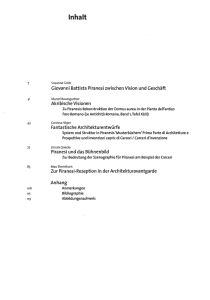
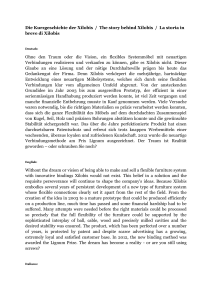
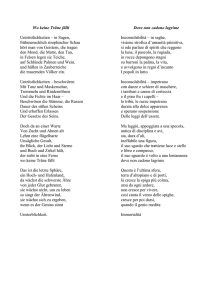
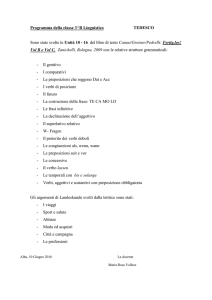
![Ricerca nr. 1 [MS WORD 395 KB]](http://s1.studylibit.com/store/data/000076742_1-2ede245e00e21c823e517529e1c3be46-300x300.png)
